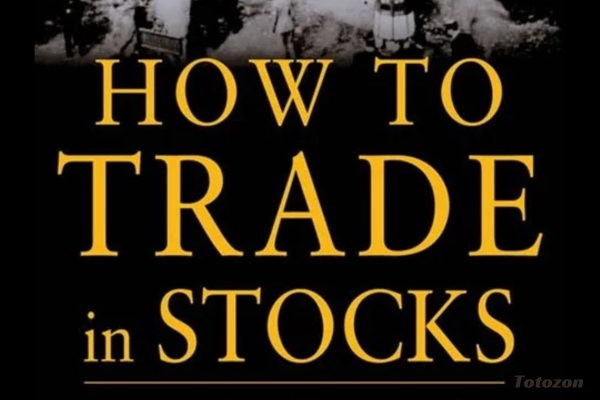How to Trade in Stocks
$6.00
File Size: Coming soon!
Delivery Time: 1–12 hours
Media Type: Online Course
How to Trade in Stocks
Trading in stocks can be a rewarding venture if approached with the right knowledge and strategies. This comprehensive guide covers everything you need to know about stock trading, from the basics to advanced techniques, helping you navigate the stock market confidently and effectively.
Understanding Stock Trading
What is Stock Trading?
Stock trading involves buying and selling shares of companies in the stock market. Traders aim to profit from price fluctuations over short or long periods.
Why Trade Stocks?
Trading stocks can provide substantial financial returns, portfolio diversification, and an opportunity to be part of the growth of leading companies.
Types of Stock Trading
- Day Trading: Buying and selling stocks within the same trading day.
- Swing Trading: Holding stocks for several days to weeks to capitalize on short-term trends.
- Position Trading: Holding stocks for several months to years, focusing on long-term gains.
Getting Started with Stock Trading
Setting Up a Trading Account
Choosing a Broker
Select a reputable broker that offers low fees, a robust trading platform, and reliable customer service. Consider online reviews and recommendations.
Account Types
Decide between a cash account and a margin account. A cash account requires upfront payment for purchases, while a margin account allows borrowing funds from the broker.
Understanding the Stock Market
Major Stock Exchanges
Familiarize yourself with major stock exchanges such as the New York Stock Exchange (NYSE) and the Nasdaq. Each has different listing requirements and trading hours.
Market Participants
Understand the roles of various market participants, including retail traders, institutional investors, and market makers.
Fundamental Analysis
Evaluating Companies
Financial Statements
Analyze financial statements, including the income statement, balance sheet, and cash flow statement, to assess a company’s financial health.
Key Ratios
Use key financial ratios such as the price-to-earnings (P/E) ratio, debt-to-equity ratio, and return on equity (ROE) to compare companies.
Industry and Economic Analysis
Industry Trends
Examine industry trends to identify sectors with growth potential. Consider factors such as technological advancements and regulatory changes.
Economic Indicators
Monitor economic indicators like GDP growth, unemployment rates, and inflation to understand the broader economic environment.
Technical Analysis
Chart Patterns
Common Patterns
Learn to recognize common chart patterns such as head and shoulders, double tops and bottoms, and triangles, which can signal potential price movements.
Technical Indicators
Moving Averages
Use moving averages to identify trends and potential reversal points. Common types include simple moving averages (SMA) and exponential moving averages (EMA).
Relative Strength Index (RSI)
The RSI measures the speed and change of price movements, helping identify overbought or oversold conditions.
Developing a Trading Strategy
Risk Management
Setting Stop-Loss Orders
Implement stop-loss orders to limit potential losses. This involves setting a price at which the stock will be sold automatically if it drops to that level.
Position Sizing
Determine the size of each trade based on your risk tolerance and the size of your trading account. Avoid overleveraging, which can lead to significant losses.
Backtesting
Testing Your Strategy
Backtest your trading strategy on historical data to evaluate its effectiveness. This involves simulating trades based on past market conditions.
Analyzing Results
Analyze backtesting results to identify strengths and weaknesses in your strategy. Adjust parameters as needed to improve performance.
Executing Trades
Placing Orders
Market Orders
A market order is executed immediately at the current market price. It’s useful for entering or exiting positions quickly.
Limit Orders
A limit order sets a specific price at which the trade will be executed. It provides more control over the execution price but may not be filled if the market doesn’t reach that price.
Monitoring Your Portfolio
Regular Reviews
Regularly review your portfolio to ensure it aligns with your trading goals and risk tolerance. Make adjustments as needed based on market conditions.
Staying Informed
Stay informed about market news, company updates, and economic events that can impact your investments.
Advanced Trading Techniques
Options Trading
Basics of Options
Options give the right, but not the obligation, to buy or sell a stock at a specified price before a certain date. They can be used for hedging or speculative purposes.
Strategies
Learn various options trading strategies, such as covered calls, protective puts, and straddles, to enhance your trading toolkit.
Short Selling
What is Short Selling?
Short selling involves borrowing shares to sell them at the current price, with the intention of buying them back later at a lower price. It’s a strategy used to profit from declining stock prices.
Risks and Rewards
Understand the risks of short selling, including unlimited losses if the stock price rises. Proper risk management is crucial.
Conclusion
How to Trade in Stocks provides a comprehensive roadmap for navigating the stock market. By mastering fundamental and technical analysis, developing a robust trading strategy, and implementing advanced techniques, you can enhance your trading success. Continuous learning and disciplined risk management are key to becoming a successful stock trader.
FAQs
What is the best way to start trading stocks?
Start by educating yourself about the stock market, opening a trading account with a reputable broker, and practicing with a demo account before trading with real money.
How can I minimize risks in stock trading?
Minimize risks by using stop-loss orders, diversifying your portfolio, and avoiding overleveraging. Continuous learning and disciplined risk management are also crucial.
What are the key differences between fundamental and technical analysis?
Fundamental analysis evaluates a company’s financial health and economic environment, while technical analysis focuses on price patterns and market trends to predict future movements.
Can I trade stocks with a small budget?
Yes, you can start trading stocks with a small budget. Consider using fractional shares or ETFs to diversify your investments without needing a large initial capital.
How often should I review my trading strategy?
Regularly review your trading strategy to ensure it remains effective. Analyze your performance, backtest adjustments, and stay informed about market changes.
Be the first to review “How to Trade in Stocks” Cancel reply
You must be logged in to post a review.
Related products
Forex Trading
Forex Trading
The Complete Guide to Multiple Time Frame Analysis & Reading Price Action with Aiman Almansoori
Forex Trading
Forex Trading
Forex Trading
Forex Trading
Forex Trading
Forex Trading
Forex Trading
Forex Trading























Reviews
There are no reviews yet.